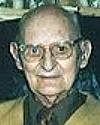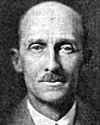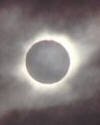 | TODAY IN SCIENCE HISTORY NEWSLETTER - 4 JUNE |
| Feature for Today |
 On 4 Jun 1906, pathologist Howard T. Ricketts discovered that Rocky Mountain Spotted Fever is caused by an unusual microbe spread by ticks. Its symptoms are similar to typhus except the rash starts at extremities and moves to the trunk. The disease causes high morbidity with about 70% of cases requiring hospitalization, without which, the untreated mortality rate is about 7% of cases. On 4 Jun 1906, pathologist Howard T. Ricketts discovered that Rocky Mountain Spotted Fever is caused by an unusual microbe spread by ticks. Its symptoms are similar to typhus except the rash starts at extremities and moves to the trunk. The disease causes high morbidity with about 70% of cases requiring hospitalization, without which, the untreated mortality rate is about 7% of cases.He published a paper, Rocky Mountain Spotted Fever which summarized his investigations into the nature and means and transmission of the disease. It is well worth finding out about his careful work by reading this report, given in his own words. |
| Book of the Day | |
| |
| QUIZ | |
| Before you look at today's web page, see if you can answer some of these questions about the events that happened on this day. Some of the names are very familiar. Others will likely stump you. Tickle your curiosity with these questions, then check your answers on today's web page. | |
| Births | |
 |  On 4 Jun 1910, the inventor of the hovercraft was born. He began by testing the concept using kitchen scales, tin cans and a vacuum cleaner. The next year he built a working balsa wood model with a model-aircraft engine. The first full-scale prototype, SR-N1, weighed 7 tons and was capable of 60 knots. It crossed the English Channel in 1959 (with the inventor aboard). Hovercraft entered regular cross-channel service in 1968. He died 1 Jun 1999 . On 4 Jun 1910, the inventor of the hovercraft was born. He began by testing the concept using kitchen scales, tin cans and a vacuum cleaner. The next year he built a working balsa wood model with a model-aircraft engine. The first full-scale prototype, SR-N1, weighed 7 tons and was capable of 60 knots. It crossed the English Channel in 1959 (with the inventor aboard). Hovercraft entered regular cross-channel service in 1968. He died 1 Jun 1999 . Can you name this man? Can you name this man? |
 |  Beno Gutenberg was born 4 Jun 1889, an American seismologist noted for his analyses of earthquake waves and the information they furnish about the physical properties of the Earth's interior. When he worked with Charles Richter, they developed a method of determining the intensity of earthquakes. Calculating the energy released by present-day shallow earthquakes, they showed that three-quarters of that energy occurs in a particular geographical region. Beno Gutenberg was born 4 Jun 1889, an American seismologist noted for his analyses of earthquake waves and the information they furnish about the physical properties of the Earth's interior. When he worked with Charles Richter, they developed a method of determining the intensity of earthquakes. Calculating the energy released by present-day shallow earthquakes, they showed that three-quarters of that energy occurs in a particular geographical region.  Where on the earth is this region? Where on the earth is this region? |
| Deaths | |
 |  William Beebe (1877-1962) was an American biologist, explorer, and writer on natural history. As director of tropical research for the New York Zoological Society from 1919, he led scientific expeditions to many parts of the world. He was the coinventor of the bathysphere, a spherical diving-vessel for use in underwater observations. In 1934, with Otis Barton, he descended in his bathysphere to a then record depth. William Beebe (1877-1962) was an American biologist, explorer, and writer on natural history. As director of tropical research for the New York Zoological Society from 1919, he led scientific expeditions to many parts of the world. He was the coinventor of the bathysphere, a spherical diving-vessel for use in underwater observations. In 1934, with Otis Barton, he descended in his bathysphere to a then record depth.  To the nearest thousand feet, how deep was this record dive? To the nearest thousand feet, how deep was this record dive? |
| Events | |
 |  On 4 June of a certain year, the first total solar eclipse reliably recorded was noted by the Chinese. On 4 June of a certain year, the first total solar eclipse reliably recorded was noted by the Chinese.  To the nearest century, when was this earliest record made? To the nearest century, when was this earliest record made? |
 |  On 4 Jun 1984, the cloning of DNA sequences from an extinct animal was reported. Using samples from an over 140-yr-old hide in a German museum, three Berkeley scientists managed to extract enough DNA from the animal's flesh to determine some of its sequences of "base pairs," the molecular rungs that link the two spiral halves of a DNA molecule. Technical problems make the study of ancient DNA difficult, since these molecules are often greatly fragmented. The scientists could show the animal's DNA was more closely related to the zebra than the horse. The animal was a brown, horselike beast with zebra stripes on the front of its body, which inhabited South Africa until it was exterminated by hunters in the early 19th century). On 4 Jun 1984, the cloning of DNA sequences from an extinct animal was reported. Using samples from an over 140-yr-old hide in a German museum, three Berkeley scientists managed to extract enough DNA from the animal's flesh to determine some of its sequences of "base pairs," the molecular rungs that link the two spiral halves of a DNA molecule. Technical problems make the study of ancient DNA difficult, since these molecules are often greatly fragmented. The scientists could show the animal's DNA was more closely related to the zebra than the horse. The animal was a brown, horselike beast with zebra stripes on the front of its body, which inhabited South Africa until it was exterminated by hunters in the early 19th century).  Can you name this extinct animal? Can you name this extinct animal? |
 |  In 1963, a U.S. patent for a "Toy Truck" (No. 3,091,888) was issued. The toy separated into a chassis, driver's cab, truck body, wheels and four axles so it could be reassembled in either a closed van body or dump truck form. When the wheel axles were put into place, they also held the also cab and body to the chassis. The truck body can be turned upside down and end for end in order to mount as either a van body, or a dump truck body with a swinging back end. As a dump truck, the body pivots on the wheel axles to tip its load, and the back wall swings open on its own pivots at the top of the wall. In 1963, a U.S. patent for a "Toy Truck" (No. 3,091,888) was issued. The toy separated into a chassis, driver's cab, truck body, wheels and four axles so it could be reassembled in either a closed van body or dump truck form. When the wheel axles were put into place, they also held the also cab and body to the chassis. The truck body can be turned upside down and end for end in order to mount as either a van body, or a dump truck body with a swinging back end. As a dump truck, the body pivots on the wheel axles to tip its load, and the back wall swings open on its own pivots at the top of the wall.  What was remarkable about the inventor? What was remarkable about the inventor? |
| Answers |
When you have your answers ready to all the questions above, you'll find all the information to check them, and more, on the June 4 web page of Today in Science History. Or, try this link first for just the brief answers. Fast answers for the previous newsletter for June 3: lead; vanadium; Panama Canal; Newton's Principia; the decade including the year 1896; Thomas Watson. |
| Feedback |
 If you enjoy this newsletter, the website, or wish to offer encouragement or ideas, please send feedback by using your mail reader Reply button. If you enjoy this newsletter, the website, or wish to offer encouragement or ideas, please send feedback by using your mail reader Reply button. |
--
If you do not want to receive any more newsletters, Unsubscribe
To update your preferences and to unsubscribe visit this link




Δεν υπάρχουν σχόλια:
Δημοσίευση σχολίου